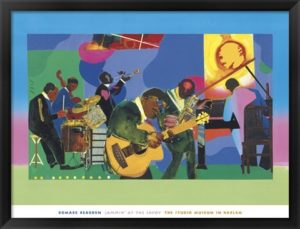 I get about a dozen magazines a week, and many of them are collecting on a pile in the corner of my bedroom, and most of them I skim quickly. But the one magazine that always has interesting content and that I read thoroughly is the University of Chicago Magazine. (NOTE – I am a U of Chicago Booth School of Business MBA ’79 – read my 2-part blog about recently returning for my 40-year class reunion.)
I get about a dozen magazines a week, and many of them are collecting on a pile in the corner of my bedroom, and most of them I skim quickly. But the one magazine that always has interesting content and that I read thoroughly is the University of Chicago Magazine. (NOTE – I am a U of Chicago Booth School of Business MBA ’79 – read my 2-part blog about recently returning for my 40-year class reunion.)
The Spring 2019 edition had several interesting articles that coincided well with my diversity and inclusion consulting business. These included:
• Toward a more diverse and inclusive Uchicago (page 9)
• Lieber Erich about a play inspired by the author finding a box of old letters written by his grandmother for Nazi Germany before losing her life in the Holocaust. (page 48)
• One Person’s Power about a 1968 African-American graduate, Sybil Jordan Hampton, who attended Little Rock Central High School two years after the famed “Little Rock 9” enrolled following the Supreme Court Ruling Brown vs. Board of Education (page 52)
• And the article this blog is about, “History Matters” featuring Claire Hartfield’s (JD ’82) two books for young readers (but excellent for old readers too!) (page 14)
Ms. Hartfield’s “day job” was overseeing the development of school desegregation plans for the cities of Chicago and Rockfield, Illinois, and in her own words was inspired to write books to tell “some stories that were not being told, important stories.”
The first book is a children’s book entitled “Me and Uncle Romie.” It’s the story of young African – American boy who is sent by train up from rural North Carolina to Harlem in New York City (for his first time) to stay with his Uncle Romie and Aunt Nanette while his mother was toward the end of a difficult pregnancy. In addition to experiencing the fascinating sights and sounds of New York City, he started to learn more about his mysterious Uncle Romie who seemed to spend hours holed up in his art studio.
The book has an appendix at the back with instructions on how to create collage art.
The second book is geared toward teen and young adult readers, though perfect for all adults, “A Few Red Drops – The Chicago Race Riot of 1919.” On July 27, 1919, a white man threw a rock at hit and killed a teenage black boy at the beach, which exploded into several days of intense rioting that engulfed Chicago’s South Side. What is excellent about this book, is that after shortly recounting the murder, Ms. Hartfield goes through all the dynamics from the past several decades that created the environment that provided the impetus for this explosion.
Some of these factors included several societal issues that are still present in America today:
• Overcrowded and poor living conditions
• The struggles between immigrants from Europe and blacks (freed slaves and their children) moving to Chicago to seek a better life
• Business owners who were exploiting workers with long hours and low wages, and pitting the groups against each other
• Lawless gangs protecting their turf and terrorizing citizens with little intervention from law enforcement.
This thoughtful exploration of the second half of the 19th century and the early 20th of south side Chicago faithfully documents a part of history that needs to be remembered and learned from.
I thank the University of Chicago Magazine for bringing this author and her books to light, and I thank Claire Hartfield (link to Claire’s website) for gifting us with these two important literary contributions.




